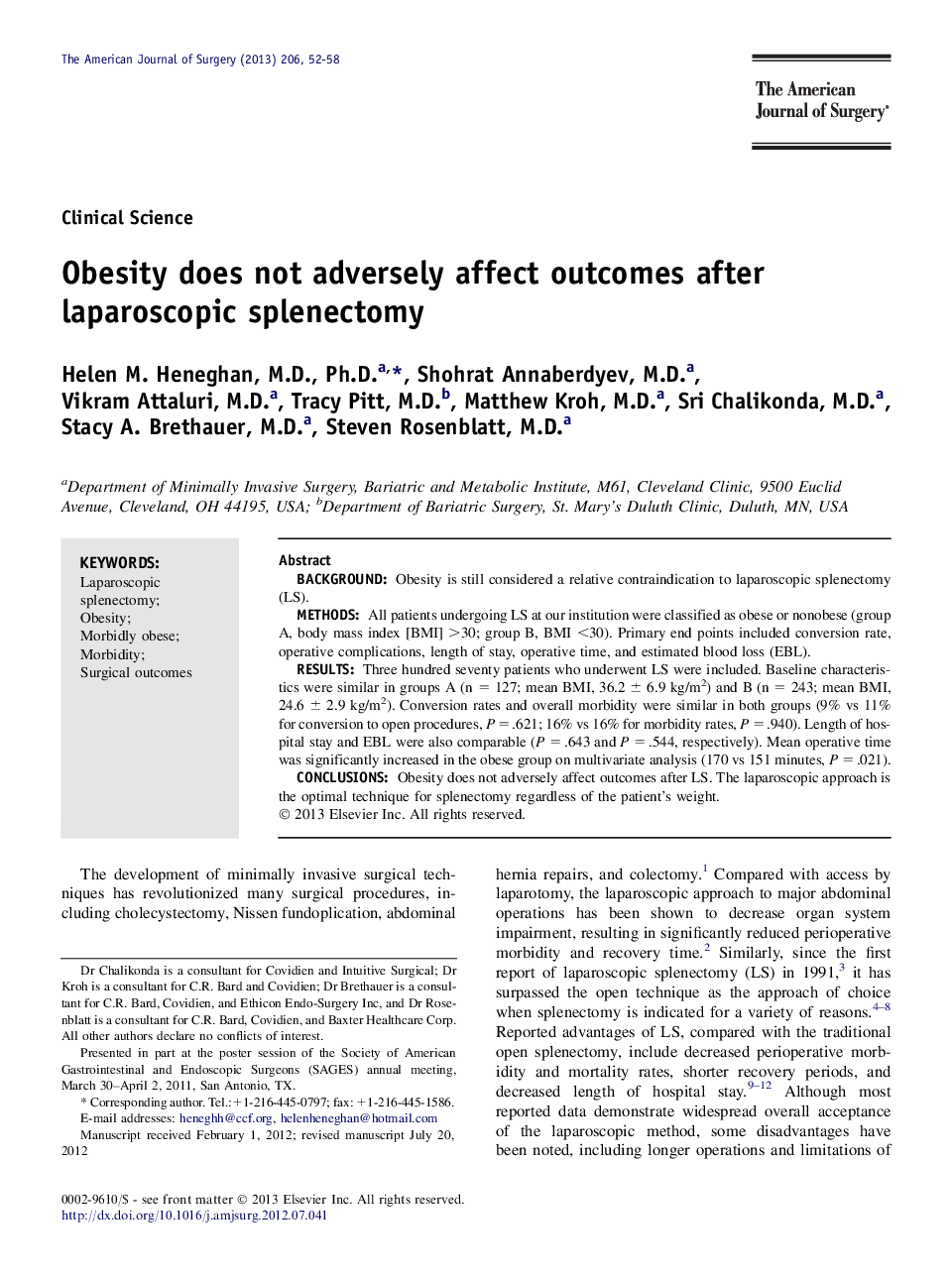| Article ID | Journal | Published Year | Pages | File Type |
|---|---|---|---|---|
| 4279324 | The American Journal of Surgery | 2013 | 7 Pages |
BackgroundObesity is still considered a relative contraindication to laparoscopic splenectomy (LS).MethodsAll patients undergoing LS at our institution were classified as obese or nonobese (group A, body mass index [BMI] >30; group B, BMI <30). Primary end points included conversion rate, operative complications, length of stay, operative time, and estimated blood loss (EBL).ResultsThree hundred seventy patients who underwent LS were included. Baseline characteristics were similar in groups A (n = 127; mean BMI, 36.2 ± 6.9 kg/m2) and B (n = 243; mean BMI, 24.6 ± 2.9 kg/m2). Conversion rates and overall morbidity were similar in both groups (9% vs 11% for conversion to open procedures, P = .621; 16% vs 16% for morbidity rates, P = .940). Length of hospital stay and EBL were also comparable (P = .643 and P = .544, respectively). Mean operative time was significantly increased in the obese group on multivariate analysis (170 vs 151 minutes, P = .021).ConclusionsObesity does not adversely affect outcomes after LS. The laparoscopic approach is the optimal technique for splenectomy regardless of the patient's weight.
